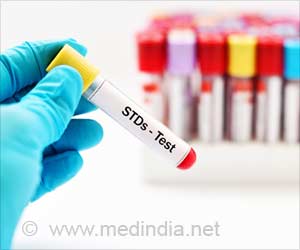A new study says when it comes to women; it's the brain and not the peripheral organs that play a major role in sexual dysfunction.
Over 40 percent of women in the 18 to 59 years age group experience sexual dysfunction, with lack of sexual interest, scientifically known as hypoactive sexual desire disorder (HSDD), being the most commonly reported complaint.Earlier studies of factors affecting sexual performance have largely focused on men, and on physiology of the body rather than the brain.
A multidisciplinary team from the Stanford University School of Medicine aimed at finding out what role the brain play in some women's lack of sexual desire.
In the study, researchers compared brain-activation patterns of females having HSDD with those without it.
Sixteen women diagnosed with HSDD, along with 20 normal control subjects, took part in the study. All subjects identified themselves as heterosexual.
For the study, all the participants were shown erotic video segments interspersed among footage of female sporting events. These segments were separated by intervening tranquil sequences of such subjects as flowers, mountains or ocean waves to bring the women's brains to a resting state between more-active segments.
Their brain activity was monitored by functional magnetic-resonance imaging, which allows the activity of different brain regions to be assessed in real time. The women also reported their subjective levels of sexual arousal throughout the viewing.
Meanwhile, the researchers also collected objective measurements of the women's level of genital arousal.
It was found that the activity patterns throughout most of the brain were more or less identical among the HSDD and normal groups, but with a few notable exceptions.
There was a bigger jump in relative activity in three brain areas of HSDD women, the medial frontal gyrus, right inferior frontal gyrus and bilateral putamen, compared with the control subjects when shown the erotic clips.
In another brain area, the bilateral entorhinal cortex, the opposite effect occurred.
The finding establishes specific locations in the brain where activity in women with HSDD is altered in comparison with women not reporting this problem.
The results suggested that increased attention to one's own responses to erotic stimuli plays some part in the sexual dysfunction.
The increased activation in the entorhinal cortex observed in the control subjects may correlate with an improved ability among women with no sexual dysfunction, compared with HSDD women, to lay down emotional memories related to sexual events.
"The results of this study provide yet another valuable tool for understanding the complexity of female sexual function as it relates to desire. The next step is to translate this information into the clinical realm, specifically as it relates to cognitive and pharmacotherapeutic approaches," said Leah Millheiser, MD, clinical assistant professor of obstetrics and gynaecology.
The results appeared in the journal Neuroscience.
Source-ANI
ARU/L













